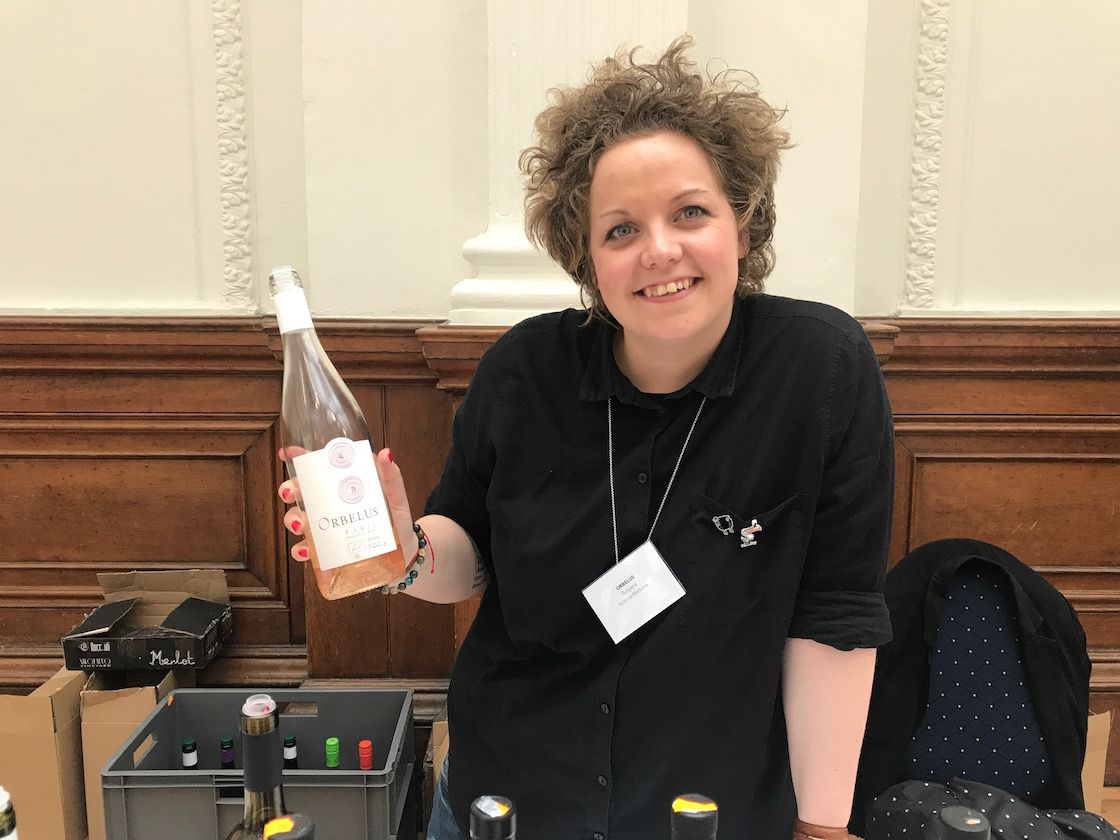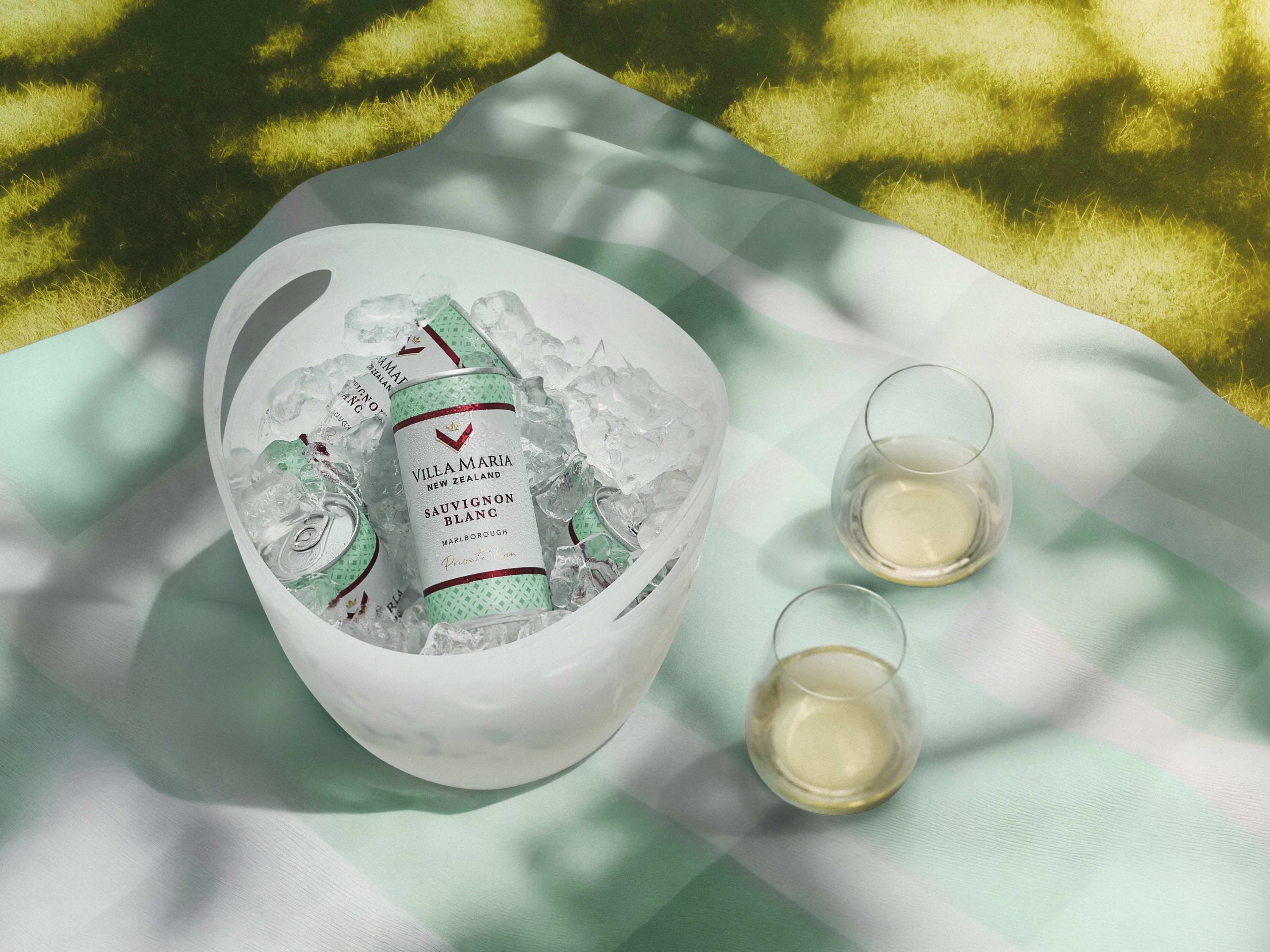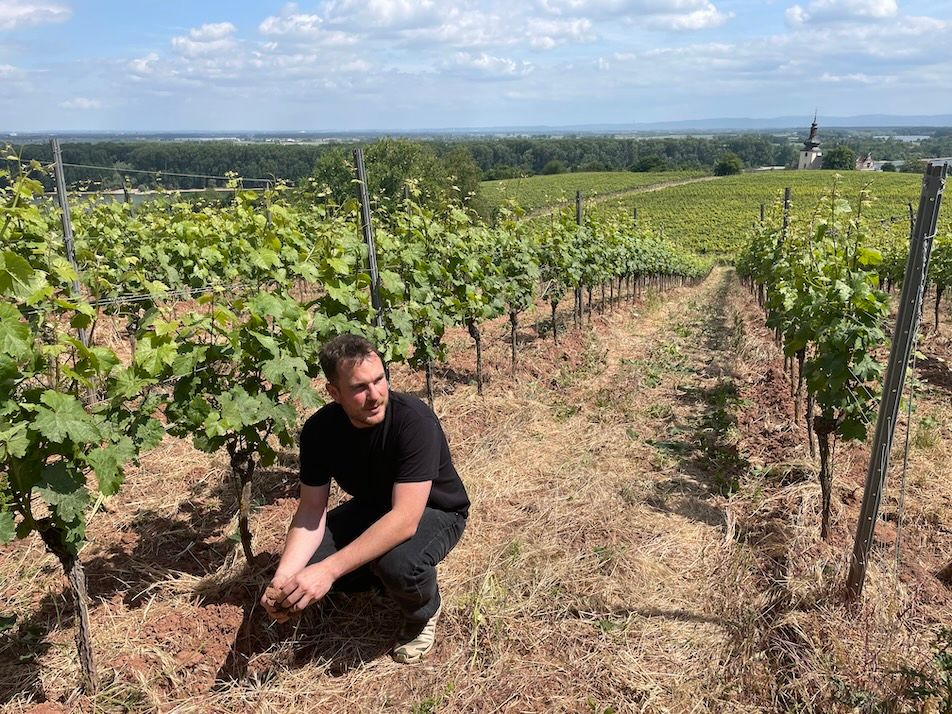A wealth of indigenous and cross-bred grape varieties, a range of fermentation vessels, ageing in wood, concrete, egg – what’s not to like about Bulgarian wine these days?
There’s nothing like a tasting that fills you with genuine excitement. You might have piles to do back in the office or at home and there might be a slight drag to your heels on arrival – ‘how many wines?!’ – but nothing beats that feeling when you leave a tasting venue with a skip in your step thinking ‘to think I might have missed that?’.
Discovering where Bulgarian wine is currently at was a case in point (and this was just one part, mind, of a much larger showing of European Independents). Getting a grip on the difference between Early and Broad-leaved Melnik for example, the extraordinary number of cross-bred varietals emanating from the Communist era, and discovering how enthusiastic the winemakers are about what they’re doing and what the future holds.
Oh, and one was even wearing a wooden bow-tie!
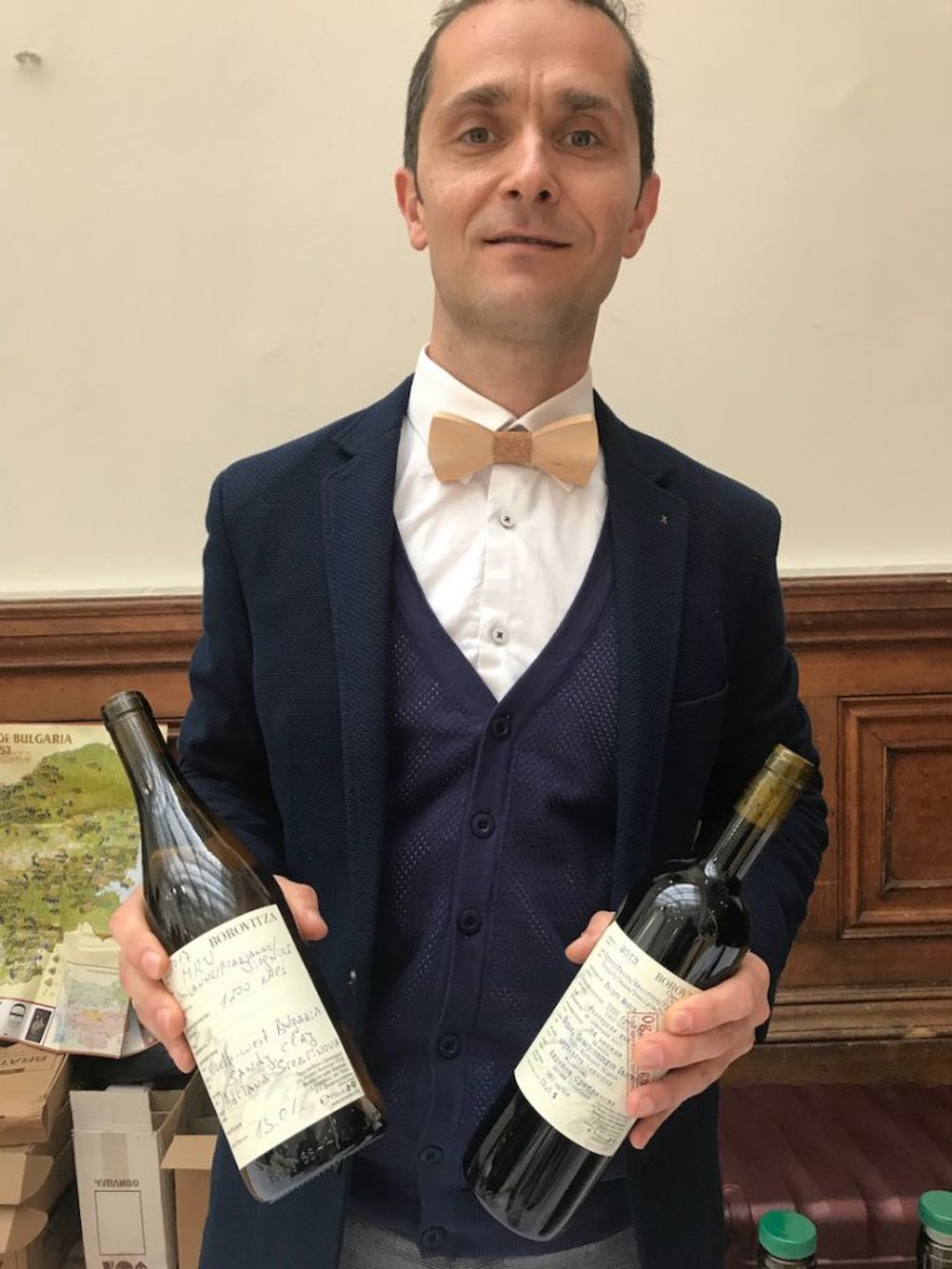
We weren’t joking – that tie is made of wood. Borovitza’s Kaloyan Gyupchanov
Orelek, Orbelus, 2016
Chardonnay, Viognier, 13% ABV
The entire Orbelus range was on song using an imaginative mix of indigenous grapes and international in blends, but also as single vineyard wines. It is Bulgaria’s only certified Organic winery, established in 2009. This blend of 60% Chardonnay and 40% Viognier has vivid notes of fresh oranges, and drying herbs. On the palate the wine has a lovely fine texture, good acidity and juicy citrus flavours. Really expressive.
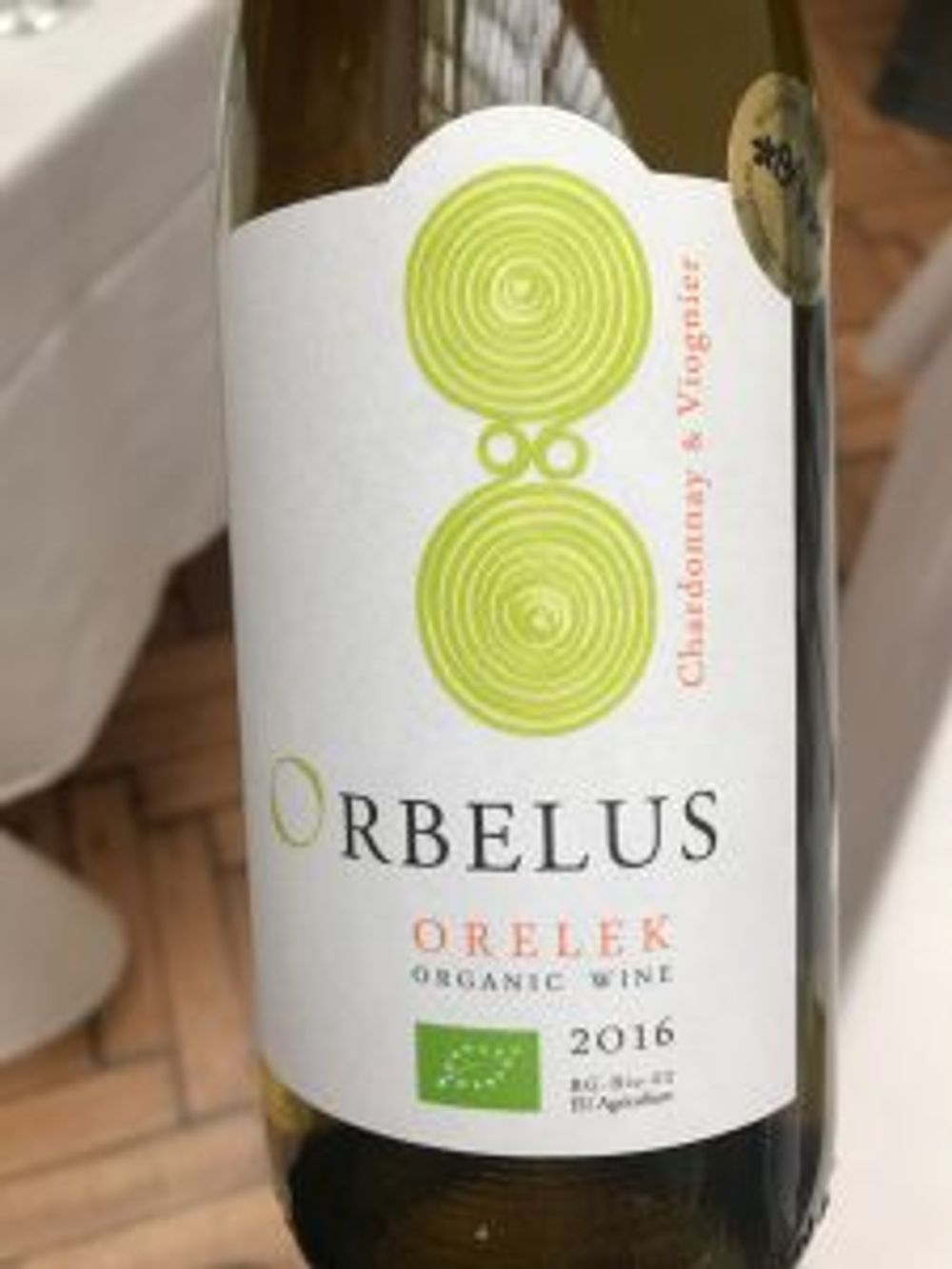
Orange, Rossidi, 2017
Gewürztraminer, 13% ABV
Rossidi has more interesting things going on in its range than some entire generic tastings put together. Given how close its Thracian Valley location is to Turkey you wouldn’t expect Gewürztraminer to grow here and also be so zingy and fresh, but it does thanks to a mix of elevation, North-facing aspects and a band of mountains that run East to West and give this area more of a continental climate.
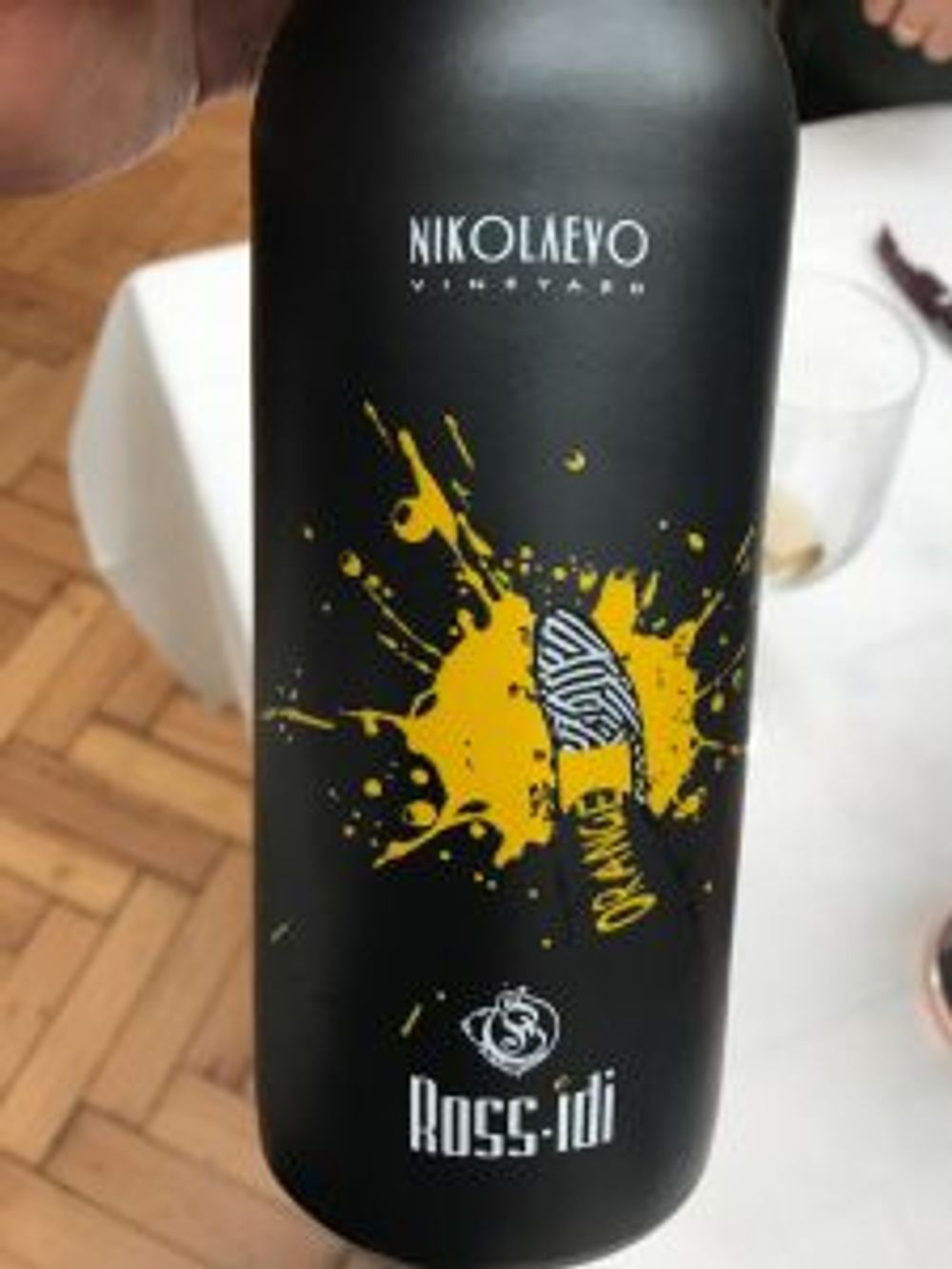

Rossidi’s Edward Kourian: future star in the making
Rossidi makes a 100% Gewürztraminer that has a lifted, fruity nose and a delicious ginger palate, it also makes a 50/50 blend with Chardonnay that came about because a Belgian client wanted a by-the-glass white in this style. But, for me and a number of others at the CEVI tasting, the Orange wine was the wine of the tasting. The grapes spend a month on the skins and then eight months on the lees in neutral barrels.
This is Rossidi’s first orange wine and it won’t be their last, it was so fresh, had bags of marmalade and orange zest and was simply so well made.
Chardonnay Egg-Fermented, Rossidi, 2016
Chardonnay, 13.5%
Same winery, different style, although all of their wines did exhibit a fresh, crisp, just-picked acidity. This 100% Chardonnay has spent eight months on the lees in concrete egg and did not undergo malolactic fermentation.
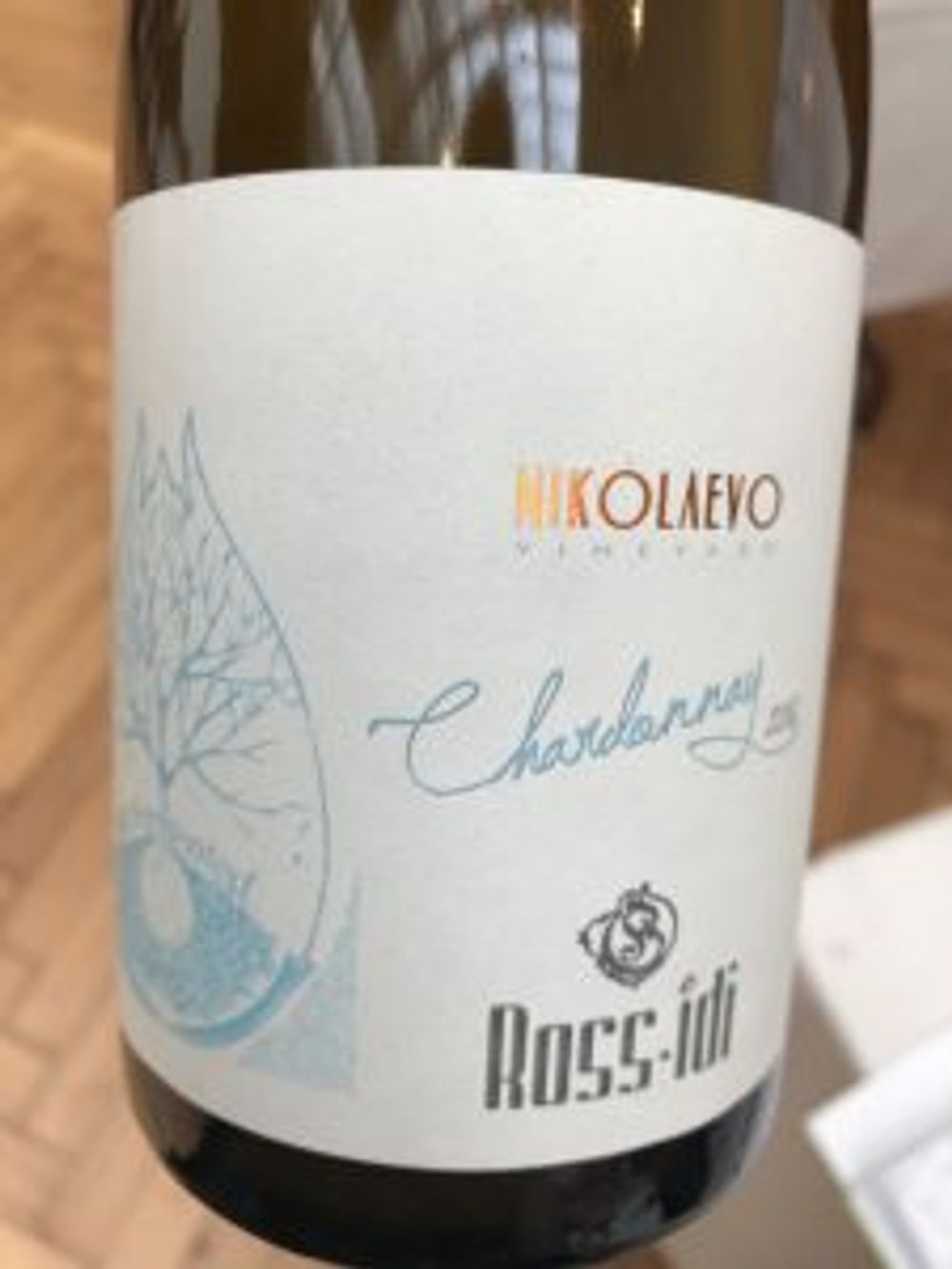
The fruit is focused and more on the savoury side, complemented by that rasping texture egg-fermentation gives a wine.
Poissons D’Or, Ivo Varbanov, 2015
Chardonnay, 14%
Ivo Varbanov is a bit of a legend in Bulgaria, being a winemaker, a wine importer, chief of the Bulgarian Association of Independent Winegrowers (BAIW) and…. A world class concert pianist. For most of the time at his stand he was on the mobile, his PA clearly used to how busy the man is.
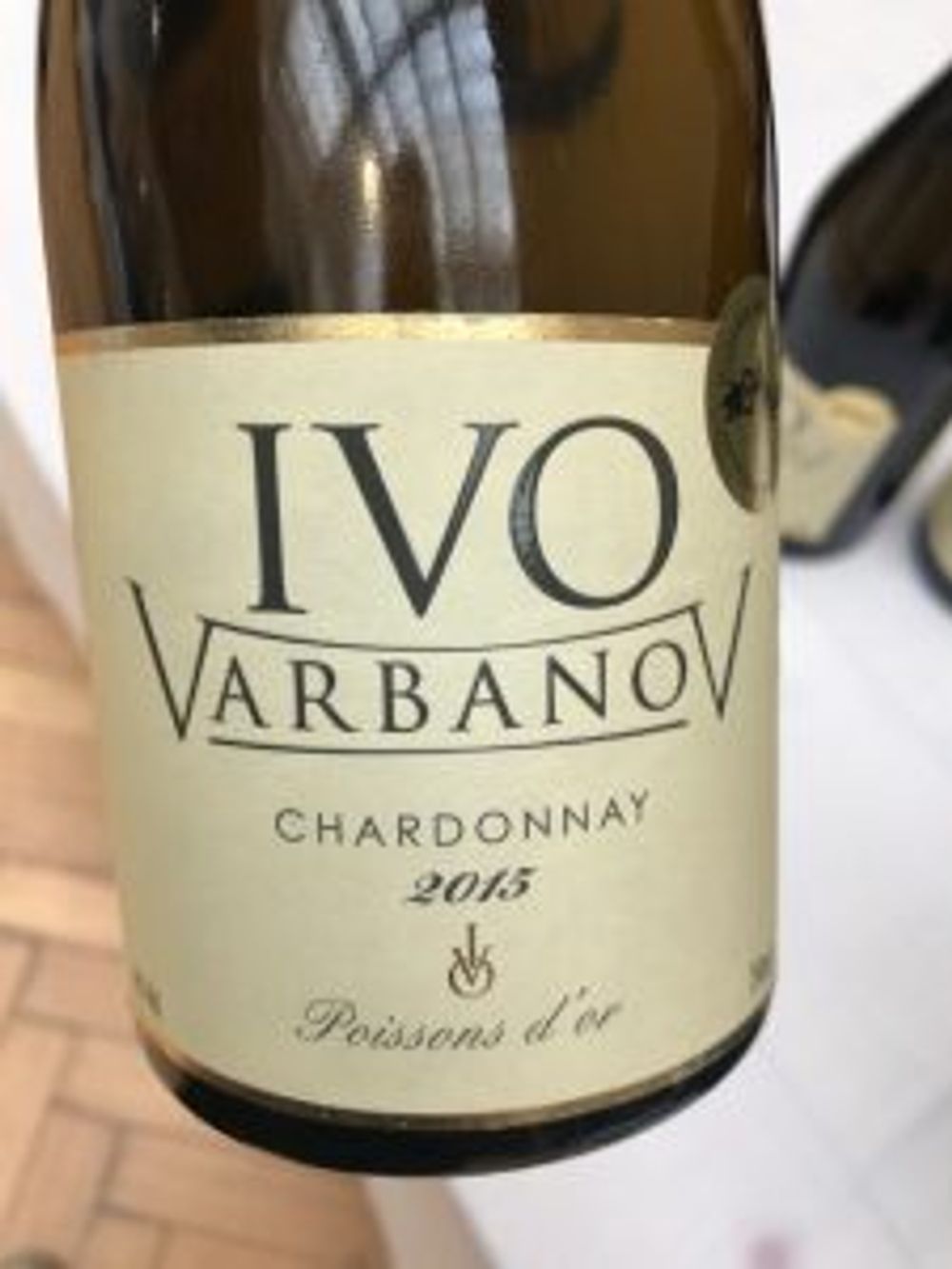

“I’m on my mobile!” The very busy Ivo Varbanov
All of the wines were superb, including a couple of under-the-table delights, one of which was a nine year-old Rosé that was outstanding.
This Chardonnay has spent four months on the lees and is then racked into 600 litre Bulgarian oak barrels. It’s a lovely rich style, with the fruit lifted on the nose and a fine-grained texture that sticks around long after the finish. Good now but it will age well, oak well-restrained.
Ogy’s Legacy, Borovitza, 2013
Bouquet, Gamza, Evmolpia, Rubin, Cabernet Franc, 13% ABV
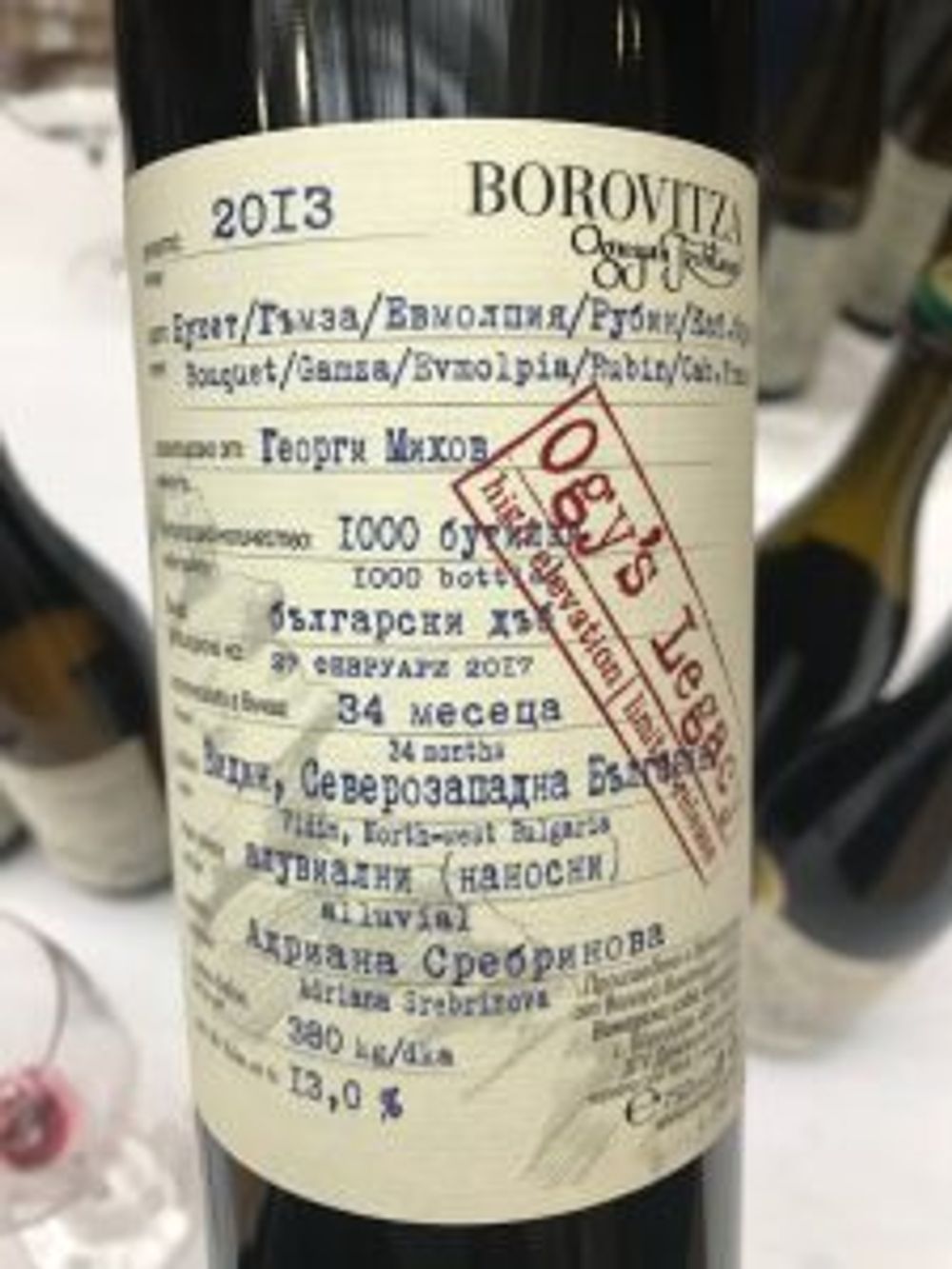
And you thought Burgundy wine labels were complicated
This small winery in North West Bulgaria has an artisanal approach that clearly works with the many indigenous varieties it works with. It does a fine Georgian-style Rkatsiteli/ Aligote blend called Cuvée Bella Rada, and its 100% Gamza (aka Kadarka) had a Cider-like rusticity to it that was enjoyable.
Ogy’s Legacy is a multi-varietal blend that is made as a white and a red (with different grapes obviously). A lot of these indigenous varieties are a legacy of the Communist era where a good deal of cross-breeding went on, Bouquet is a blend of Pinot Noir and Mavrud, Evmolpia is a cross between Merlot and Mavrud and Rubin a cross between Syrah and Nebiolo. It’s a complex wine as you’d expect, full of fascinating twists and turns, terrific texture and nicely restrained alcohol.
Hrumki, Orbelus, 2015
Merlot, Early Melnik, Syrah, Marselan, Grenache Noir, 14.5% ABV
Like Ogy’s Legacy, Hrumki is a multi-varietal blend that is totally unique, in fact so unique that the varietals and the blend are different vintage to vintage. It comes across like a field blend made by Pieter Walser from BLANKbottle in that it mixes blending innovation with a marketing savviness.
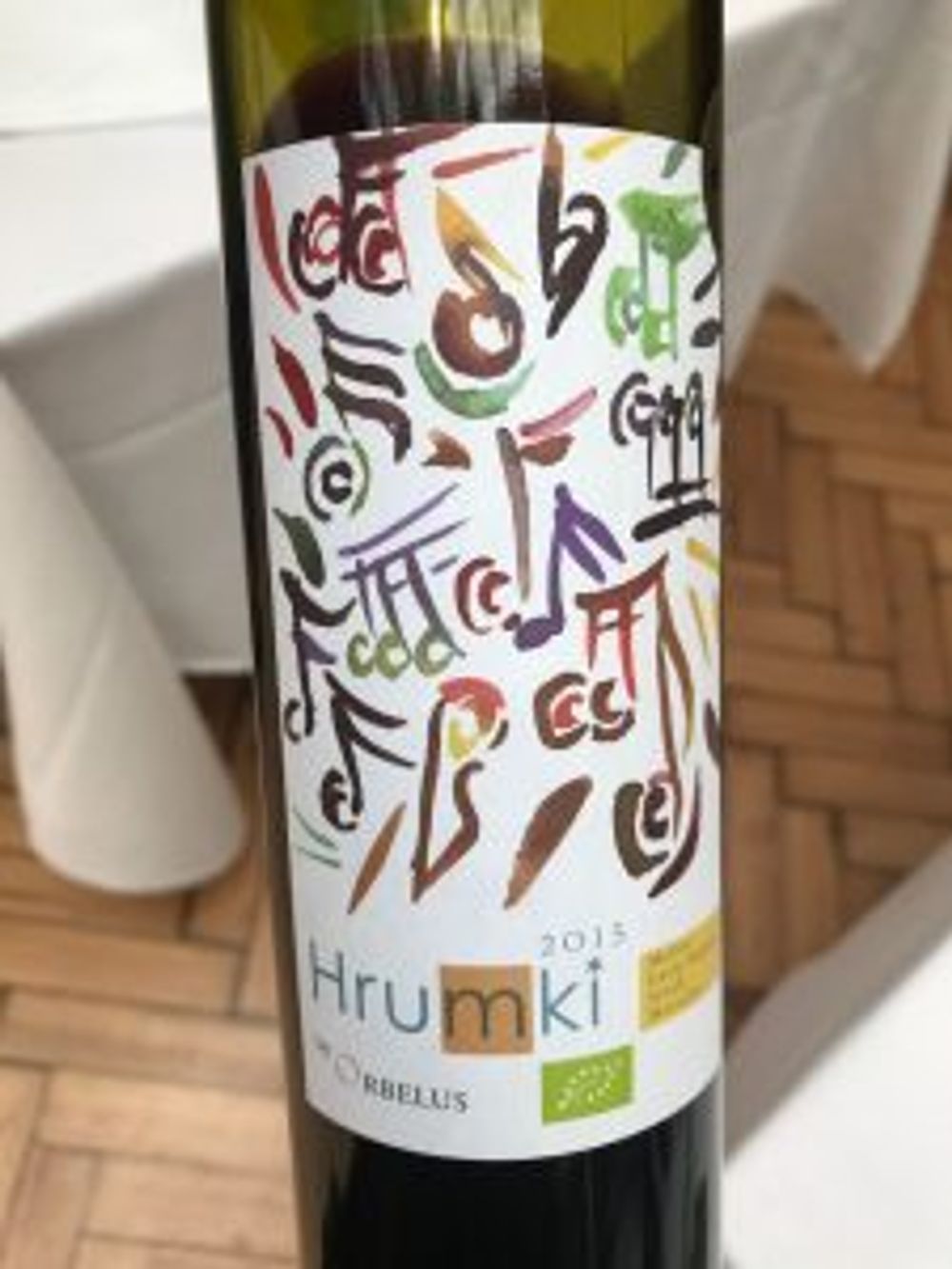
‘Hrumki’ is the Bulgarian word for ‘whim’ or ‘notion’ but this is not flip winemaking – it’s easy going, heavily textured but fresh as a daisy, that belies its 14.5% alcohol. Early Melnik (unlike its ‘sibling’ Broad-leaved Melnik) does exactly what it says on the tin and gets picked very early in the harvest – August 10 in 2016.
Cabernet Franc, Eolis, 2015
Cabernet Franc, 14% ABV
It’s the Viognier from Eolis that’s most easy to find in the UK but its heavily-oaked style wasn’t to my taste. Much better, in my opinion, are the reds, particularly this beauty of a Cabernet Franc, a variety that suits the climate of the Thracian Lowlands where Eolis is based, being a late-picked variety and harvested in mid-October. The grapes have a cold soak and are then aged in 400 litre French oak for 15 months. The wine has classic Cab Franc notes of red capsicum, spice and a fresh, grainy texture.

This wine is ex-cellar €11 and punches well above its weight but with only 800 bottles produced you might have to put in for an allocation direct.
Syrah, Rossidi, 2015
Syrah, 13% ABV
The third wine from Rossidi in this list which is a good batting average by anyone’s reckoning! I loved the lean, crunchy edge to the wine that comes from North-facing high elevation. It’s been fermented in steel from where it’s aged for 12 months in 300 litre French hogsheads.

This is an elegant wine that has slight tar and liquorice on the nose and a gorgeous fresh, wet-stone texture.
Merlot & Syrah, South Sakar Selection, Bratanov, 2015
Merlot & Syrah, 14.5%
A young winery whose first vintage was 2010 but the quality of which bodes very well for the future. Its 100% Tamianka is available in the UK, a lovely Gewürtz-like, spicy fruit bomb, its variety being related to the similarly late-picked Muscat.
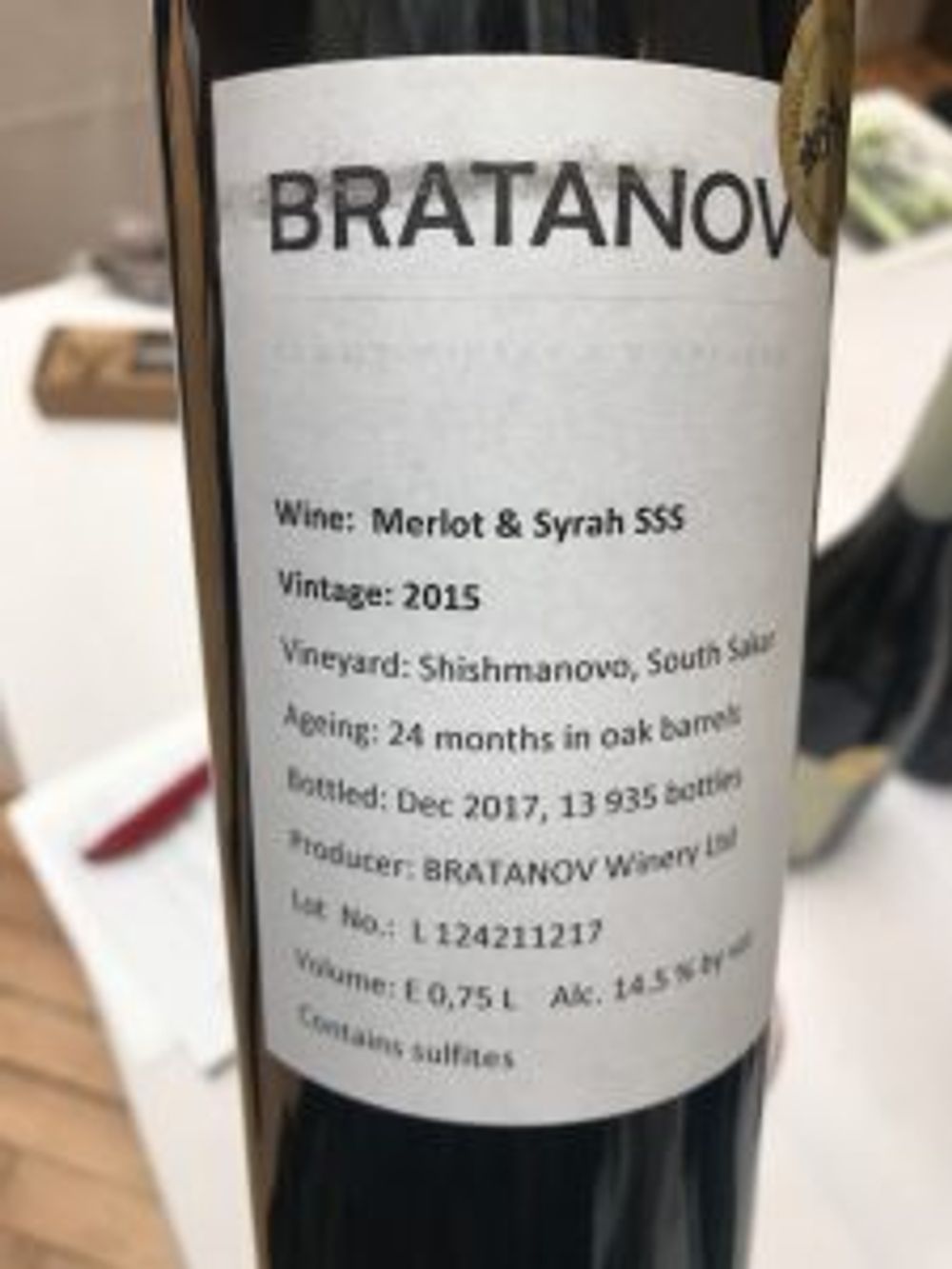

Bratanov’s Tanya Avramova
Bratanov also does a premium Cabernet Franc Private Reserve that is worth seeking out although the bottles are few and far between and priced accordingly €35 ex-cellar.
I particularly liked this Merlot/ Syrah blend that had concentrated black fruits, tempered by big acidity, leading to an overall fine balance in the wine. The nose was simply gorgeous – alluring smoky and peppery – the finish dry and lengthy.
The Firebird, Ivo Varbanov, 2013
Syrah
Ivo Varbanov blends his Syrah with Mavrud in his A Fly In A Jar cuvée, and with Merlot in Queen of the Night.

I liked most, though, this his The Firebird, a 100% Syrah that was big and spicy on the nose and then dry as a bone with profound, young tannins and acidity on the palate.
I guess you could drink it now – it would have to be with food – but probably best to keep it or try and get your hands on some aged examples. The 2011 Varbanov had on show had evolved well but was still massively tannic, the 2010 was a completely different story with tannins now well integrated producing a more fully rounded wine. Stravinsky would have been proud.
The Bulgarian wines were tasted at the 1st European Independent Winegrowers Trade Tasting held in London on May 16, 2018 by CEVI.
